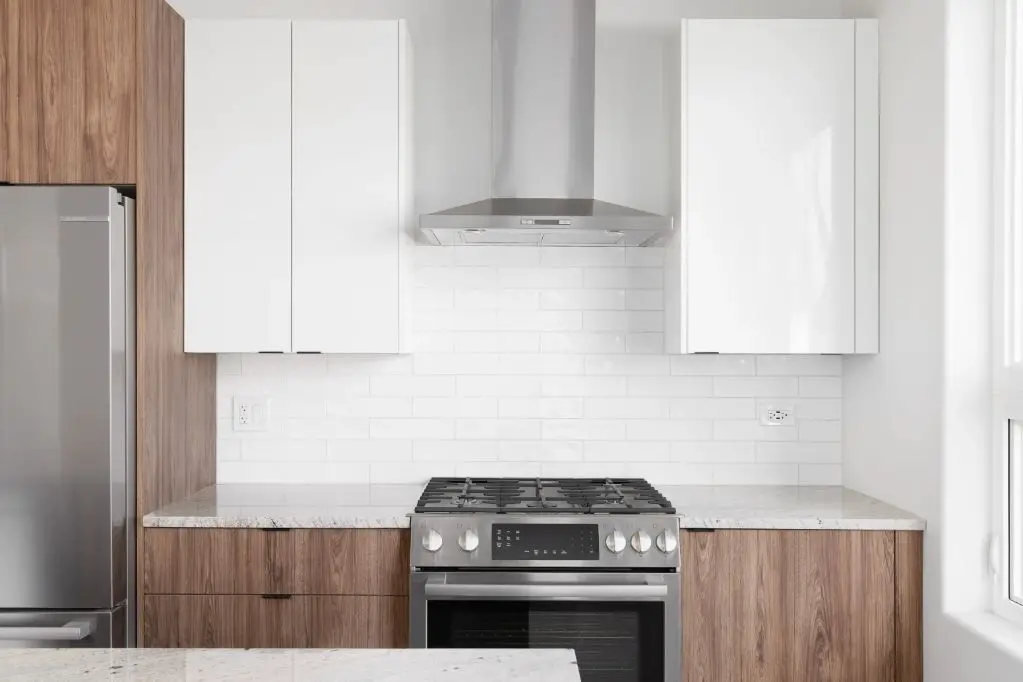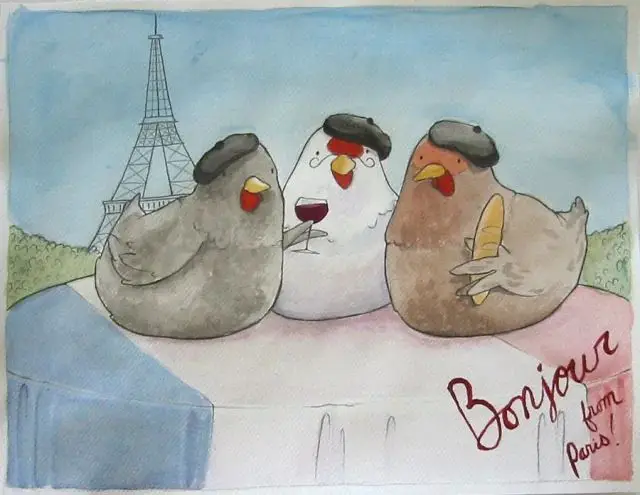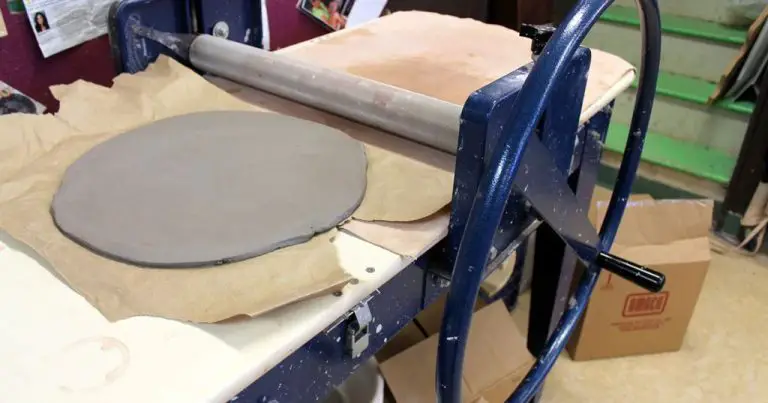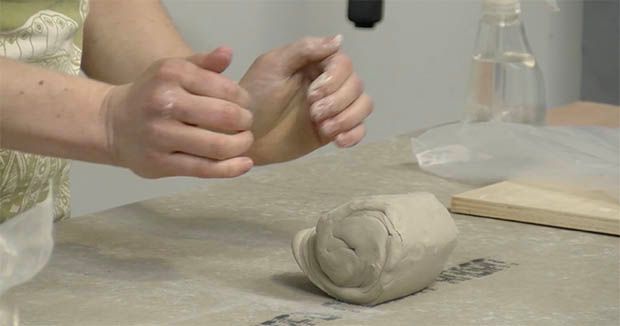Is A White Backsplash A Good Idea?
The Pros of a White Backsplash
One of the biggest pros of choosing a white backsplash is that it brightens up a kitchen and makes the space feel more open and airy. The reflective qualities of the white tiles help bounce light around the kitchen, giving it a luminous glow. This light, bright aesthetic pairs well with many popular kitchen design elements like marble countertops, light wood cabinetry, and stainless steel appliances.
According to Southern Living, white backsplashes are a particularly good choice for small, dark kitchens as they can make the space feel larger and more inviting (Southern Living). The clean, neutral look also complements both warm and cool color schemes, so white backsplashes pair nicely with paint colors like greys, blues, greens, and tans.
White tiles go with a variety of materials and styles too, from modern and contemporary to farmhouse or cottage. Their versatility makes a white backsplash a timeless choice that won’t go out of style. For many homeowners, a white backsplash is an easy way to make the kitchen feel fresh and bright.
The Cons of a White Backsplash
While a white backsplash can look clean and bright, it does have some drawbacks to consider:

Shows dirt and stains easily. The light color of a white backsplash highlights any dirt, grease splatters, or stains that end up on the tiles. Small drips and splashes can stand out and make the whole backsplash look dirty if not cleaned frequently (Southern Living).
Needs frequent cleaning. To keep a white backsplash looking its best, it will need frequent wiping down and deeper cleans. Daily maintenance is recommended to avoid buildup of grime that detracts from the crisp white look (Sooper Articles).
Can make a small kitchen feel sterile. All-white backsplashes in a small space can sometimes feel too clinical and sterile, lacking personality. Adding in some color, texture, or patterns can help warm up an all-white backsplash and keep the space from feeling cold.
Popular Alternatives to White
While white remains a popular backsplash color, there are many attractive alternatives worth considering. Here are some of the most popular options:
Gray backsplash tiles are a versatile alternative to white that can work with a variety of kitchen designs. Gray has the same clean, neutral look but adds a touch more visual interest. From light silvery grays to deeper charcoal tones, you can find gray subway tiles, ceramic tiles, glass tiles and more. Gray pairs nicely with white cabinets for a classic look or can complement dark wood cabinets.
Natural stone backsplashes like marble, granite, and travertine can provide an elegant, upscale look. Going with a natural material brings subtle swirls of color and veins that give added visual texture. Popular stone colors include white Carrara marble, gray soapstone, and tan travertine. With proper sealing, natural stone is durable and withstands heat and moisture.
Subway tiles remain a popular backsplash style that can be customized with your color choice. Alternating white subway tiles with gray or pastel tiles creates a striped effect. Or consider blue, green, black, or terracotta subway tiles for more vibrant color options.
Adding an accent color, either with full tiles or mosaic inserts, can be a great way to inject more personality into a backsplash. Bright pops of chartreuse, coral, teal or another favorite color liven up an all-white backsplash. Just a few colorful accents can go a long way.
Tips for Maintaining a White Backsplash
A white backsplash can stay looking fresh and clean with just a bit of regular maintenance. Here are some tips:
Use a sealant – Sealing the grout and tiles with a clear sealant will make cleaning much easier. Reapply the sealant every 1-2 years as needed. Products like Grout Boost or Miracle Sealants 511 Impregnator are recommended.
Clean regularly with mild soap and water – Wipe down the backsplash at least once a week using a soft sponge or microfiber cloth with warm water and mild dish soap. This helps prevent grease and dirt buildup. According to Bob Vila, you can also spray a 50/50 white vinegar and water solution, let sit, then scrub with a soft toothbrush [1].
Use a magic eraser for tougher stains – For more stubborn grease or soap scum stains, gently rub the area with a Mr. Clean Magic Eraser. Be careful not to scrub too hard on grout.
What to Consider with White Cabinets
White cabinets provide a clean, classic look in a kitchen. When pairing a backsplash with white cabinets, the key is to add visual interest and contrast through the backsplash material, color, and design.
Contrasting colors are an excellent way to make white cabinets pop. Bold colored backsplashes like navy blue, black, or charcoal gray provide striking contrast against crisp white cabinets. Materials like polished marble, glass tile, or metal tile can add shine and reflectivity to complement a bright white palette.
Patterns and textures also help white cabinets stand out. Subway tiles, herringbone patterns, geometric shapes, and mosaics all add visual flair against a neutral backdrop. Combining varied sizes of tiles or multiple materials in the same backsplash can produce depth and interest behind white cabinetry. Consider a tile design that incorporates pops of color or metallic accents to tie in additional elements of the space.[1]
Ultimately, the backsplash paired with white cabinets should complement the overall design vision for the kitchen. Contrast and texture prevent white cabinets from visually receding and help create a stylish, eye-catching kitchen design.
What to Consider with Dark Cabinets
Dark wood cabinets come in a variety of shades and can range from a richer walnut to a deep chocolate brown. A crisp, clean white subway tile or marble backsplash creates a beautiful contrast with these darker cabinetry hues.
According to sources like the Pinterest board Backsplash Dark Cabinets and the Pinterest pin Backsplash Ideas For Dark Cabinets And Dark Granite, white is a popular backsplash choice with darker cabinets because it brightens up the space and makes the cabinetry really stand out.
Natural materials like wood can also complement dark cabinets nicely. Wood backsplashes with similar tones to the cabinets can create a cohesive, elegant look. Just be careful not to choose wood that is too matchy-matchy with the cabinets or you may lose that contrast.
The Cost of a White Tile Backsplash
The cost of a white tile backsplash can vary greatly depending on the type of tile you choose and who installs it. According to HomeAdvisor, the cost to install a white subway tile backsplash ranges from $1,300 to $2,400 depending on the square footage of your backsplash.
For materials alone, white subway tiles typically cost $2 to $15 per square foot. More expensive tiles like marble can run $15 to $30 per square foot according to The Tile Club. Installation costs around $30 to $100 per hour for a professional tile installer.
In comparison, other popular backsplash materials like metal, glass, and stone tiles run $3 to $50 per square foot. So white subway tiles are generally on the more affordable end for materials. However, professional installation fees are comparable across most tile materials.
It’s ideal to get quotes from at least 3 installers. Be sure to get an itemized estimate that separates material costs from labor. This HomeGuide article provides an excellent breakdown of factors that influence subway tile installation costs.
White Backsplash Design Ideas
All-white kitchens remain a popular and timeless choice for their clean, crisp aesthetic. A white backsplash is a natural fit for an all-white kitchen, brightening the space and allowing other elements to pop. White subway tile laid in a classic brick pattern makes for a simple yet striking backsplash. The rectangular shape and thin grout lines have a minimalist, modern feel. For added visual interest, consider glossy subway tiles or vary the orientation of some tiles.
White marble mosaic tiles offer a high-end look, with an intricacy and depth that smooth subway tiles lack. Small marble mosaics create movement and reflect light beautifully. For impact, do a full marble mosaic backsplash or mix in marble accents behind the stove or sink. Carrara and Calacatta marble mosaics are on-trend options with gray veining that adds character.
For a farmhouse vibe, try a backsplash mixing white subway tiles and marble mosaics or white grouted hexagon tiles. Classic white Shaker-style cabinets look right at home with these backsplash options. Don’t be afraid to infuse personality with artisan tile shapes or patterns.
Integrating Other Colors
A white backsplash can work beautifully with accent colors integrated through tile choices or decor. Rather than matching the white tones completely, it’s best to opt for contrast. This will make the colors pop against the clean white backdrop. Some ideas for integrating color include:
Blue, green, or terracotta tile as an accent row or geometric shape against white subway tile. The contrast draws the eye to specific areas (Source).
Touches of black or dark gray in tile, appliances, or accessories help ground the white while providing definition. For example, white herringbone backsplash tile with black grout lines (Source).
Warm metal finishes like brass or copper make for an elegant complement against crisp white. Display copper pots or install brass sconces. The sheen adds visual interest.
Colorful glass, stone, or ceramic tile inserts add pops of color that can be changed out to refresh the look over time. Opt for organic shapes and natural materials.
By thoughtfully integrating accent colors through tiles, fixtures, or decor items, the white backsplash remains clean and bright while adding personality.
Conclusion
Overall, a white backsplash has both pros and cons. On the positive side, white is a clean, classic color that can brighten up a kitchen and make it look more spacious. It’s easy to clean and matches well with many cabinet colors. On the negative side, white shows dirt easily and can make a kitchen feel sterile or boring if not balanced with other colors. White grout also needs frequent cleaning to stay looking fresh.
A white backsplash is best for those who enjoy a bright, airy aesthetic and have the discipline to clean it frequently. It works well in both traditional and modern kitchens. Those with messy cooking habits or a preference for low-maintenance materials may want to opt for an alternative backsplash color or material that hides dirt better. No matter your choice, make sure to select a backsplash color and material that aligns with your lifestyle and design sensibilities.




